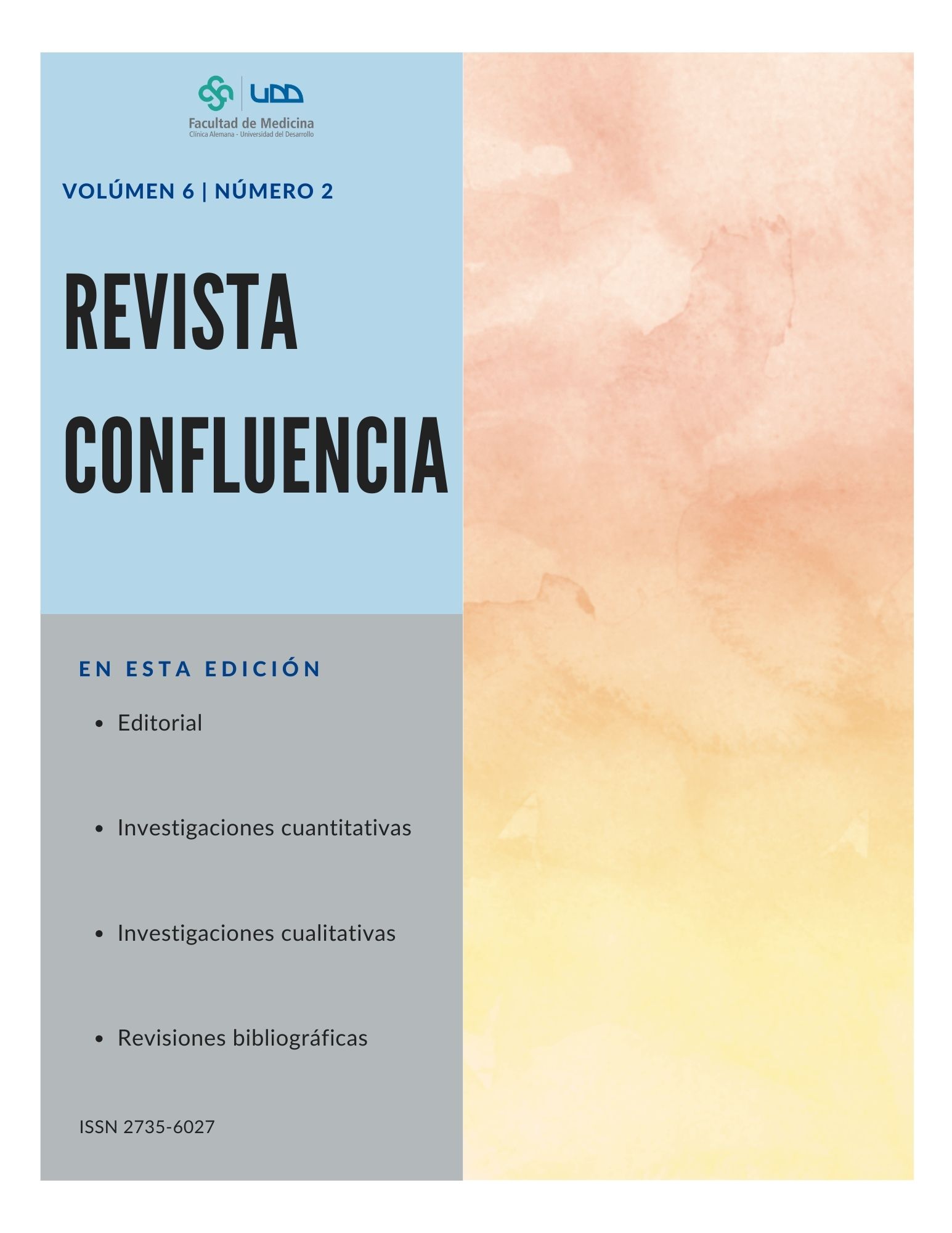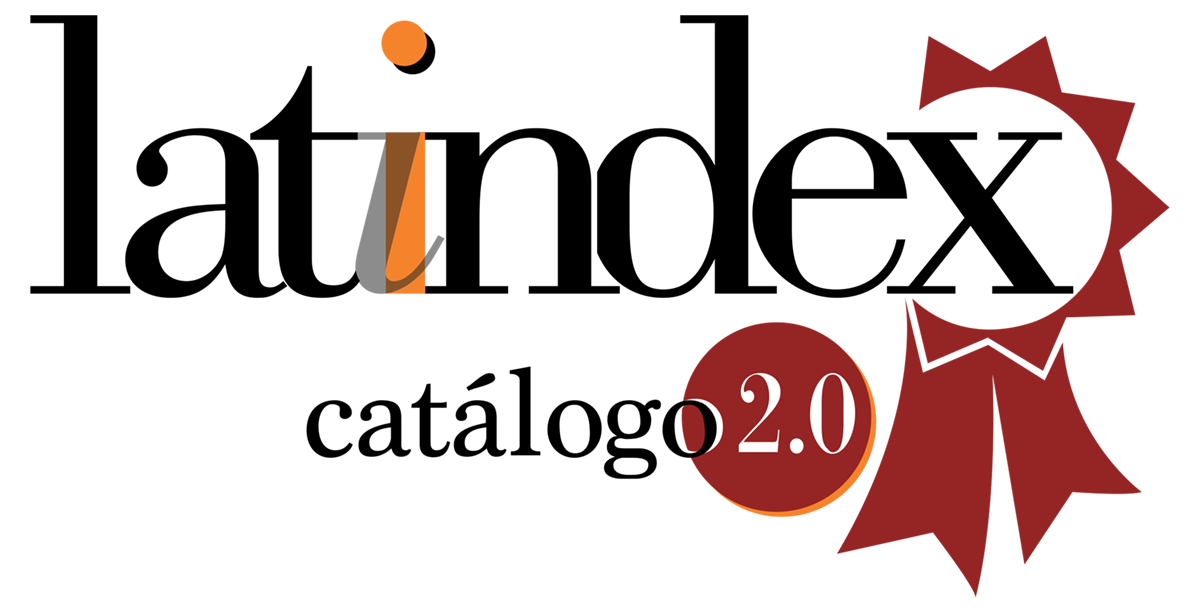Cuantificación de miARNs antiinflamatorios en microglias y astrocitos purificados y su contraste con el estado hepático en ratones que consumieron alcohol de forma voluntaria y crónica
DOI:
https://doi.org/10.52611/confluencia.num2.2023.1000Palabras clave:
Astrocitos, microglía, ratones, Reacción en cadena de la polimerasa, alcoholismoResumen
Introducción: El alcohol es una sustancia psicoactiva que afecta al hígado y al cerebro. El alcohol se metaboliza en sustancias tóxicas y radicales libres que dañan los tejidos hepáticos y pueden causar hepatitis alcohólica y cirrosis hepática. El alcohol también produce inflamación en el cerebro, que implica la activación de las células gliales y la liberación de sustancias que causan daño cerebral. Los microRNA son moléculas pequeñas que regulan la expresión génica y pueden tener efectos antiinflamatorios o proinflamatorios. Objetivo: En este estudio se midieron los niveles de varios microRNA en ratones que consumían o no alcohol, y se confirmó el consumo de alcohol y el daño hepático con pruebas de sangre y tejido. Metodología: Se extrajo parte del estriado e hipocampo de cada ratón, y en ambas áreas se purificaron astrocitos y microglías. La medición de los niveles de miRNAs se realizó a través de qPCR. Resultado: Desafortunadamente, no se encontraron diferencias significativas.
Descargas
Citas
Zakhari S. Overview: how is alcohol metabolized by the body? Alcohol Res Health J Natl Inst Alcohol Abuse Alcohol. [Internet] 2006 [citado el 28 de junio de 2022];29(4):245–54. Disponible en: https://www.ncbi.nlm.nih.gov/pmc/articles/PMC6527027/
Sil S, Niu F, Tom E, Liao K, Periyasamy P, Buch S. Cocaine Mediated Neuroinflammation: Role of Dysregulated Autophagy in Pericytes. Mol Neurobiol. maius [Internet] 2019 [citado el 28 de junio de 2022]; 56(5):3576–90.Disponible en: https://www.ncbi.nlm.nih.gov/pmc/articles/PMC6393223/#:~:text=Cocaine%20binds%20to%20the%20%CF%83,lysosomes%2C%20resulting%20in%20dysregulated%20autophagy.
Cahill CM, Taylor AM. Neuroinflammation—a cooccurring phenomenon linking chronic pain and opioid dependence. Curr Opin Behav Sci. februarius [Internet] 2017 [citado el 28 de junio de 2022];13:171–7. Disponible en: https://pubmed.ncbi.nlm.nih.gov/28451629/
Ritz L, Coulbault L, Lannuzel C, Boudehent C, Segobin S, Eustache F, et al. Clinical and Biological Risk Factors for Neuropsychological Impairment in Alcohol Use Disorder. PloS One. [Internet] 2016 [citado el 28 de junio de 2022];11(9):e0159616. Disponible en: https://journals.plos.org/plosone/article?id=10.1371/journal.pone.0159616#:~:text=The%20present%20study%20enabled%20us,for%20neuropsychological%20impairments%20in%20AL.
Qin L, He J, Hanes RN, Pluzarev O, Hong JS, Crews FT. Increased systemic and brain cytokine production and neuroinflammation by endotoxin following ethanol treatment. J Neuroinflammation. 18 martius. [Internet] 2008 [citado el 28 de junio de 2022];5:10. Disponible en: https://pubmed.ncbi.nlm.nih.gov/18348728/
Lanquetin A, Leclercq S, de Timary P, Segobin S, Naveau M, Coulbault L, et al. Role of inflammation in alcohol-related brain abnormalities: a translational study. Brain Commun. [Internet] 2021 [citado el 28 de junio de 2022];3(3):fcab154. Disponible en:
https://academic.oup.com/braincomms/article/3/3/fcab154/6322989
Pfefferbaum A, Adalsteinsson E, Sood R, Mayer D, Bell R, McBride W, et al. Longitudinal brain magnetic resonance imaging study of the alcohol-preferring rat. Part II: effects of voluntary chronic alcohol consumption. Alcohol Clin Exp Res. Iulius. [Internet] 2006 [citado el 28 de junio de 2022];30(7):1248–61. Disponible en: https://pubmed.ncbi.nlm.nih.gov/16792573/
Wang Y, Wang X, Li H, Xu M, Frank J, Luo J. Binge ethanol exposure induces endoplasmic reticulum stress in the brain of adult mice. Toxicol Appl Pharmacol. October [Internet] 2018 [citado el 28 de junio de 2022];356:172–81. Disponible en: https://pubmed.ncbi.nlm.nih.gov/30114398/#:~:text=Binge%20ethanol%20exposure%20caused%20neurodegeneration,memory%2C%20and%20spontaneous%20locomotor%20activity.
Xu H, Liu D, Chen J, Li H, Xu M, Wen W, et al. Effects of Chronic Voluntary Alcohol Drinking on Thiamine Concentrations, Endoplasmic Reticulum Stress, and Oxidative Stress in the Brain of Crossed High Alcohol Preferring Mice. Neurotox Res. Nouember. [Internet] 2019 [citado el 28 de junio de 2022];36(4):777–87. Disponible en: https://www.ncbi.nlm.nih.gov/pmc/articles/PMC6786936/
Bartel DP. MicroRNAs: genomics, biogenesis, mechanism, and function. Cell. PubMed[Internet] 2004 [citado el 28 de junio de 2022];116(2):281–97. Disponible en: https://pubmed.ncbi.nlm.nih.gov/14744438/
Bartel DP. Metazoan MicroRNAs. Cell. PubMed [Internet] 201 [citado el 28 de junio de 2022]; 173(1):20–51. Disponible en:
https://pubmed.ncbi.nlm.nih.gov/29570994/
Truscott M, Islam ABMMK, Frolov MV. Novel regulation and functional interaction of polycistronic miRNAs. PubMed. [Internet] 2016 [citado el 28 de junio de 2022];22(1):129–38. Disponible en: https://pubmed.ncbi.nlm.nih.gov/26554028/
Lee Y, Kim M, Han J, Yeom KH, Lee S, Baek SH, et al. MicroRNA genes are transcribed by RNA polymerase II. EMBO J. [Internet] 2004 [citado el 28 de junio de 2022];23(20):4051–60. Disponible en: https://www.ncbi.nlm.nih.gov/pmc/articles/PMC524334/#:~:text=Our%20data%20demonstrate%20that%20miRNA,U4%2C%20and%20U5%20snRNA%20genes.
Ureña-Peralta JR, Alfonso-Loeches S, Cuesta-Diaz CM, García-García F, Guerri C. Deep sequencing and miRNA profiles in alcohol-induced neuroinflammation and the TLR4 response in mice cerebral cortex. Sci Rep. [Internet] 2018 [citado el 28 de junio de 2022];8(1):15913. Disponible en: https://www.nature.com/articles/s41598-018-34277-y
Yu T, Huo L, Lei J, Sun J, Wang H. Modulation of Microglia M2 Polarization and Alleviation of Hippocampal Neuron Injury By MiR-106b-5p/RGMa in a Mouse Model of Status Epilepticus. Inflammation. [Internet] 2022 [citado el 28 de junio de
;45(6):2223–42. Disponible en: https://pubmed.ncbi.nlm.nih.gov/35789312/
Zhang M, Yang JK, Ma J. Regulation of the long noncoding RNA XIST on the inflammatory polarization of microglia in cerebral infarction. Exp Ther Med. 30 iunius [Internet] 2021 [citado el 28 de junio de 2022]; 22(3):924. Disponible en: https://pubmed.ncbi.nlm.nih.gov/34306193/
Banerjee S, Cui H, Xie N, Tan Z, Yang S, Icyuz M, et al. miR-125a-5p regulates differential activation of macrophages and inflammation. J Biol Chem. [Internet] 2013 [citado el 28 de junio de 2022];288(49):35428–36. Disponible en:
https://pubmed.ncbi.nlm.nih.gov/24151079/
Marangon D, Castro E Silva JH, Lecca D. Neuronal and Glial Communication via Non-Coding RNAs: Messages in Extracellular Vesicles. Int J Mol Sci. [Internet] 2022 [citado el 28 de junio de 2022]; 24(1):470. Disponible en: https://pubmed.ncbi.nlm.nih.gov/36613914/
Dan HC, Cooper MJ, Cogswell PC, Duncan JA, Ting JPY, Baldwin AS. Akt-dependent regulation of NF-?B is controlled by mTOR and Raptor in association with IKK. Genes Dev. [Internet] 2008 [citado el 28 de junio de 2022]; 22(11):1490–500. Disponible en:
https://www.ncbi.nlm.nih.gov/pmc/articles/PMC2418585/
Michaille JJ, Cimino A, Costinean S, Dumitru CD, Adair B, et al. Modulation of miR-155 and miR-125b levels following lipopolysaccharide/TNF-alpha stimulation and their possible roles in regulating the response to endotoxin shock. J Immunol Baltim Md 1950. [Internet] 2007 [citado el 28 de junio de 2022]; 179(8):5082–9. Disponible en: https://pubmed.ncbi.nlm.nih.gov/17911593/
Androulidaki A, Iliopoulos D, Arranz A, Doxaki C, Schworer S, Zacharioudaki V, et al. The Kinase Akt1 Controls Macrophage Response to Lipopolysaccharide by Regulating MicroRNAs. Immunity. [Internet] 2009 [citado el 28 de junio de 2022]; 31(2):220–31. Disponible en: https://pubmed.ncbi.nlm.nih.gov/19699171/
Busch S, Auth E, Scholl F, Huenecke S, Koehl U, Suess B, et al. 5-Lipoxygenase Is a Direct Target of miR-19a-3p and miR-125b-5p. J Immunol. [Internet] 2015 [citado el 28 de junio de 2022];194(4):1646–53. Disponible en: https://pubmed.ncbi.nlm.nih.gov/25589070/
Ru L, Wang X mei, Niu J qi. The miR-23–27–24 cluster: an emerging target in NAFLD pathogenesis. Acta Pharmacol Sin. [Internet] 2022 [citado el 28 de junio de 2022]; 43(5):1167–79. Disponible en: https://pubmed.ncbi.nlm.nih.gov/34893685/
Cui M, Yao X, Lin Y, Zhang D, Cui R, Zhang X. Interactive functions of microRNAs in the miR?23a?27a? 24?2 cluster and the potential for targeted therapy in cancer. J Cell Physiol. [Internet] 2020 [citado el 28 de junio de 2022]; 235(1):6–16. Disponible en:
https://pubmed.ncbi.nlm.nih.gov/31192453/
Liu J, Fan L, Yu H, Zhang J, He Y, Feng D, et al. Endoplasmic Reticulum Stress Causes Liver Cancer Cells to Release Exosomal miR?23a?3p and Up? regulate Programmed Death Ligand 1 Expression in Macrophages. Hepatology. [Internet] 2019 [citado el 28
de junio de 2022]; 70(1):241–58. Disponible en: https://pubmed.ncbi.nlm.nih.gov/30854665/
Sun Q, Wang B, Li M. MicroRNA?23a?3p targeting of HMGB1 inhibits LPS?induced inflammation in murine macrophages in vitro. Exp Ther Med. [Internet] 2022 [citado el 28 de junio de 2022]; 23(5):322. Disponible en: https://pubmed.ncbi.nlm.nih.gov/35386623/
Li Z, Xu R, Zhu X, Li Y, Wang Y, Xu W. MicroRNA-23a3p improves traumatic brain injury through modulating the neurological apoptosis and inflammation response in mice. Cell Cycle. [Internet] 2020 [citado el 28 de junio de 2022]; 19(1):24–38. Disponible en: https://www.ncbi.nlm.nih.gov/pmc/articles/PMC6927724/
Chen J, Huang T, Liu R, Wang C, Jiang H, Sun H. Congenital microtia patients: the genetically engineered exosomes released from porous gelatin methacryloyl hydrogel for downstream small RNA profiling, functional modulation of microtia chondrocytes and tissue-engineered ear cartilage regeneration. J Nanobiotechnology. [Internet] 2022 [citado el 28 de junio de 2022]; 20(1):164. Disponible en: https://pubmed.ncbi.nlm.nih.gov/35346221/
Zhao H, Tao Z, Wang R, Liu P, Yan F, Li J, et al. MicroRNA-23a-3p attenuates oxidative stress injury in a mouse model of focal cerebral ischemia-reperfusion. Brain Res. [Internet] 2014 [citado el 28 de junio de 2022]; 1592:65–72. Disponible en: https://pubmed.ncbi.nlm.nih.gov/25280466/
Li Z, Xu R, Zhu X, Li Y, Wang Y, Xu W. MicroRNA-23a3p improves traumatic brain injury through modulating the neurological apoptosis and inflammation response in mice. Cell Cycle. [Internet] 2020 [citado el 28 de junio de 2022]; 19(1):24–38. Disponible en: https://www.ncbi.nlm.nih.gov/pmc/articles/PMC6927724/#:~:text=PMID%3A%2031818176-,MicroRNA%2D23a%2D3p%20improves%20traumatic%20brain%20injury%20through%20modulating%20the,and%20inflammation%20response%20in%20mice
Ginckels P, Holvoet P. Oxidative Stress and Inflammation in Cardiovascular Diseases and Cancer: Role of Non-coding RNAs. [Internet] 2019 [citado el 28 de junio de 2022];5(1):32-35. Disponible en: https://pubmed.ncbi.nlm.nih.gov/35370493/
Descargas
Publicado
Cómo citar
Número
Sección
Licencia
Derechos de autor 2023 Revista Confluencia

Esta obra está bajo una licencia internacional Creative Commons Atribución-NoComercial-SinDerivadas 4.0.









